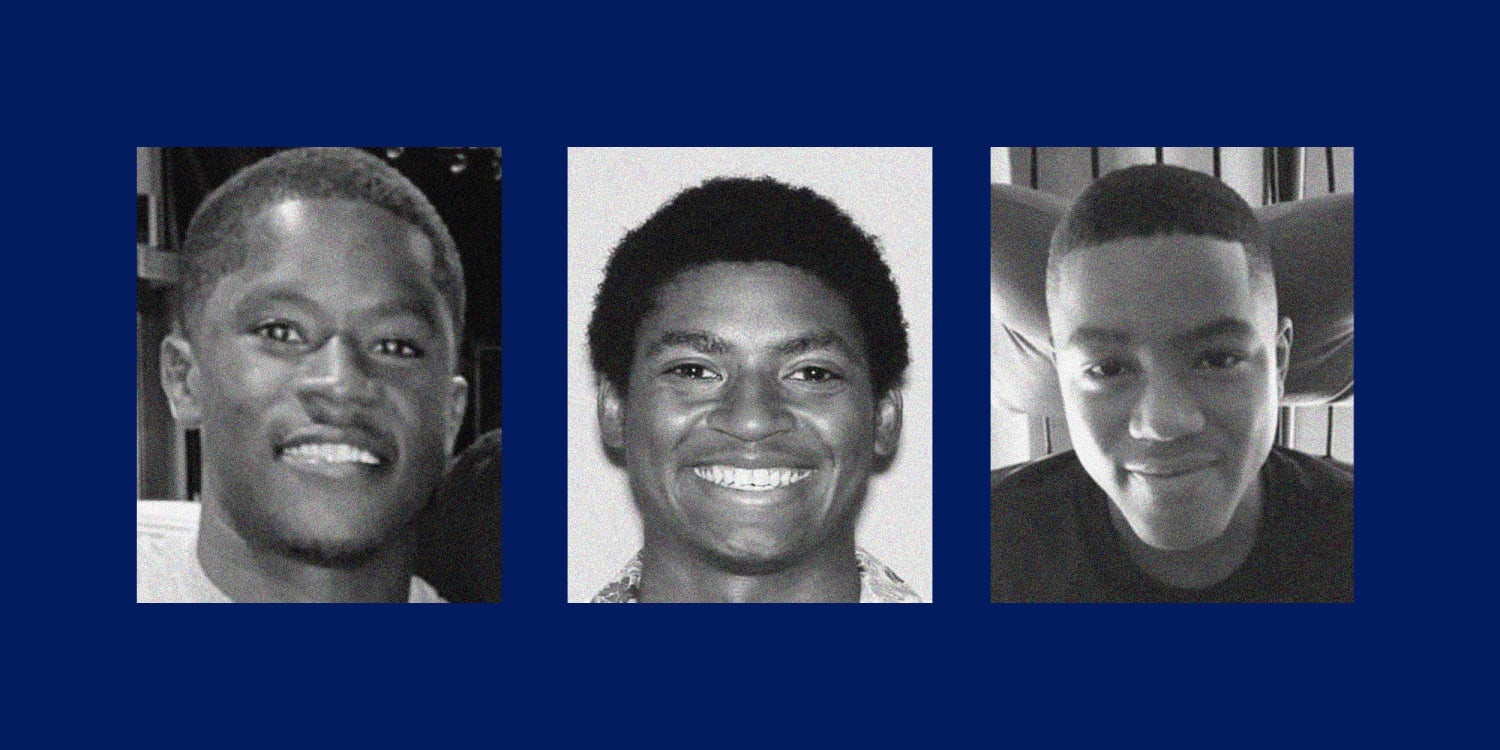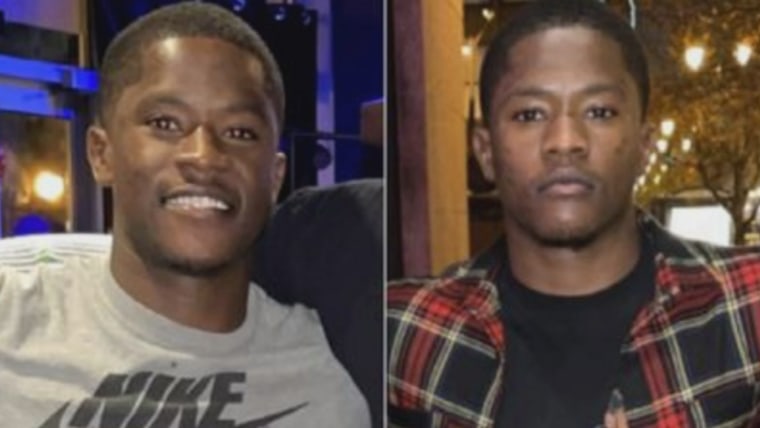David Robinson hired a private investigator and has traversed the Arizona desert with volunteers in search of his 24-year-old son, Daniel, a geologist who went missing in late June.
Rasheda Smith in Aurora, Colorado, said she didn’t hear from police for more than a week after she reported that her teen stepson, Xavion, had run away earlier this month.
Robinson, Smith and relatives of Jelani “JJ” Day, an Illinois State University graduate student who has not been seen since August, all have something in common: They’re Black people who are exasperated after pleading with authorities to do more to find their loved ones.
Their frustration with law enforcement intensified as stories about the disappearance of Gabby Petito, a 22-year-old white woman, dominated the national news cycle, the result, some say, of “missing white woman syndrome.” Gwen Ifill, the legendary news anchor, coined that term in 2004 to underscore the news media’s fascination with white women who go missing.
The families watched as at least six agencies, including the FBI, devoted resources in the search for Petito, whose remains were found Sunday at the Spread Creek Dispersed Camping Area in Bridger-Teton National Forest, near Grand Teton National Park in Wyoming.
“I’ve been pushing for three months to raise awareness because I’m not getting enough from the police department. I want the FBI involved,” Robinson, 51, a retired Army sergeant, said. “When you’re a person of color, you kind of get overlooked. You don’t want to believe that, but when it hits you head on, you can’t do nothing but see what’s going on.”
Robinson, Smith and the Day family told NBC News it has been painful to witness the disparities between the cases of their loved ones and Petito’s, which is now being investigated as a homicide.
“The same manpower they gave her, I want the same manpower for my brother,” D’Andre Day, 28, said.
“I understand what [Petito’s] family is going through because we are going through that right now. Jelani just didn’t disappear. Somebody knows what happened. Somebody needs to report what happened. We need everybody involved, the same way they were involved with Gabby.”
‘My brother is important’
Jelani Day, 25, was in his first semester of graduate school in the communication sciences and disorders department at Illinois State University. He was studying speech pathology at the Normal, Illinois, school.
“I know how determined he was, and it took a lot to get into that school,” D’Andre Day said. “My brother is important. He has great things to do still on this earth.”
On Thursday, the LaSalle County Coroner identified a body found earlier this month as Jelani Day, 25, of Bloomington, Illinois. The body was found floating near the south bank of the Illinois River on Sept. 4, law enforcement officials said. The cause of death is unknown, pending further investigation and toxicology testing.
Day was last spotted on video at a retail store the morning of Aug. 24, Bloomington police said.Two days later, his white Chrysler 300 was found abandoned in the woods about 60 miles north of Bloomington in Peru, Illinois, officials said. Clothes that he wore on the day he was last seen were found inside his car, according to police.
The discovery of the “vehicle of interest” in the case sparked an “extensive search,” Peru police said. The investigation included dogs with the Illinois State Police, drones from two fire departments, detectives with Bloomington police and State’s Attorney Todd Martin’s office, police said.
“Police can do a lot more,” D’Andre Day said, adding he hopes the FBI gets involved in his brother’s case.
Bloomington police said the department “empathizes with Jelani Day’s family and support them in their emotions,” adding that they were working with several organizations in their investigation.
“We still are collecting leads, but at this point, we have done a bulk of the investigation,” police said in a statement. “It is not a cold case by any means; however, the leads are starting to dry up. We appreciate the national coverage this case has been getting, and we hope that translates to good information being provided to us.”
Jelani Day’s mother, Carmen Day, told “Dateline” after his disappearance: “I call him my ‘bill collector child.’ Because he just calls me and calls me, nonstop, several times a day. So to not hear from him in a week is very unlike him. Something’s not right.”
‘We are the ones with the boots on the ground’
After Daniel Robinson went missing June 23, his father uprooted his life and drove from his home in Columbia, South Carolina, to Arizona where Buckeye police were investigating.
Once in Arizona, David Robinson reached out to nonprofit groups for help networking. Since then, dozens of volunteers have participated in searches and two websites have been launched to bolster his son’s case. One website includes a petition, which has more than 43,000 signatures, that is meant to keep police accountable because the case is stagnant, he said.
Daniel Robinson was last seen leaving his geology job, police said. Police have “worked with outside agencies to search more than 70 square miles in an effort to locate Daniel,” officials said.
On July 19, his Jeep Renegade was found by a rancher four miles from his job site, according to police.
Authorities said the Jeep was in a ravine and appeared to have rolled on its side. The airbags in the SUV deployed, police said. Daniel Robinson’s clothes, cellphone, wallet and keys were found near the Jeep.
The next day, Buckeye detectives were assisted in a ground search by a helicopter and rescue dogs with the Maricopa County Sheriff’s Office, police said.
“Since then, they have not put boots on the ground,” David Robinson said. “We are the ones with the boots on the ground.”
Buckeye police said Thursday that the case remains open and active.
“We are committed to finding Daniel Robinson,” Buckeye Police Chief Larry Hall said in a statement. “Our investigators are working tirelessly to find answers and bring closure to Daniel’s loved ones.”
Shortly after his son’s Jeep was found, David Robinson began working with a private investigator, he said.
A human skull was located July 31 south of where Daniel Robinson’s Jeep was discovered. But it was not his remains, officials said.
Volunteers found the skull and alerted police, David Robinson said.
His son would not just vanish, he said.
“He never indicated he had a desire to disappear or hurt himself,” David Robinson said.
‘I assigned myself to the case’
Rasheda Smith, 45, said her stepson missed his 16th birthday celebration this month. Aurora police never really began an investigation after Xavion was reported as a runaway Sept. 6, she said.
“There’s immediately no interest in finding him,” she said.
Smith was seething when she hadn’t heard from police for 11 days after he was reported missing. That’s when her cellphone finally rang and a sergeant spoke to her, she said. He told her no detectives had been assigned to her son’s disappearance because of his history of running away and a heavy volume of cases.
“That was unacceptable. So, I assigned myself to the case,” she said. “Any kid that is out there, they should be looking for him. Past behavior, or whatever the case is, a kid is a kid.”
Aurora police tweeted Xavion’s photo over the weekend with a short write-up about his disappearance.
“Xavion was reported as running away to the Aurora Police Department on September 6. We had investigators following up on this case two days later, on September 8,” Matthew Longshore, a public information officer for Aurora police, told NBC News in a statement.
He said investigators have been in contact with the stepmother on “numerous occasions” since then. They believe he could possibly be in the Denver area, where he has connections.
“There is no evidence or reason to believe that Xavion is in danger,” Longshore said. “We are obviously concerned that he has been gone this long with no communication with his family, which is why we continue following up on leads and speaking with stepmom.”
Smith said she has used the Nextdoor app, a popular platform connecting neighbors, to organize dozens of volunteers who have searched the city several times since last week.
She wants police to do more, but if she has to be a detective — so be it.
“That’s kind of how it goes with moms,” Smith said. “We’re everything.”
Racial disparities across the board
Statistics back up the families’ concerns.
Of 543,018 people reported missing in 2020, more than 182,000 — or nearly a third — involved Black Americans, who only make up 13 percent of the U.S. population, according to the FBI’s National Crime Information Center.
Despite those high numbers, media coverage of missing persons often disproportionately focuses on white people, according to Black and Missing, a national nonprofit group that provides resources to families of missing persons of color.
That racial disparity is due, in part, to authorities often labeling missing children of color as runaways or criminals, which influence how news outlets cover their cases, the organization said.
Derrica Wilson, co-founder and CEO of the organization, told Newsweek that she shared these frustrations.
“It’s a nightmare,” she said. “But we do have a lot of Gabby Petitos in the Black and brown community as well. We understand that not all cases get that level of attention and resources — there were multiple police jurisdictions involved — but we do have cases that want that additional assistance.”
Source: | This article originally belongs to Nbcnews.com













